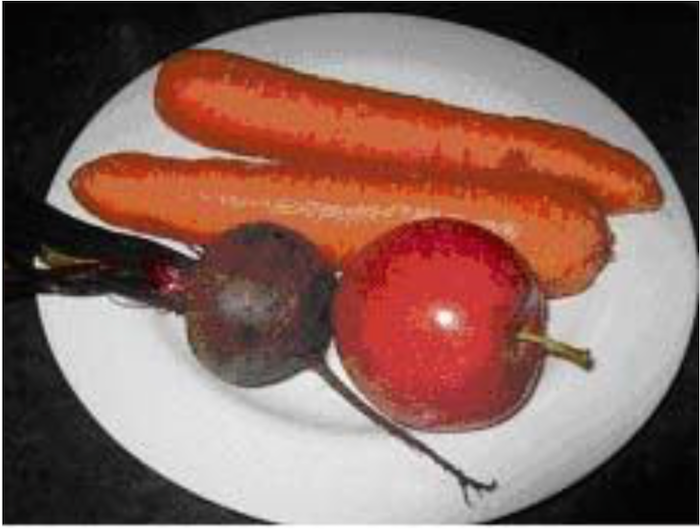In Addition
Vol 2 अंक 3
May 2011
THE BREATH
When we sit and meditate, we are often told to think of the breath, in order that our monkey mind, as Baba calls it, has something to focus on; so it stops wandering from one thought to another. We are also told to try and move the breath down to the abdomen and not just limit it to the lungs.
Now, we find it is also good for our health. In Robert Fried’s book Breathe Well, Be Well, he tells us most people breathe too shallowly and quickly. This creates an imbalance in the carbon dioxide in the blood, resulting in symptoms such as tingling in the hands, light-headedness, weakness, fatigue, frequent sighing, yawning and burping, constipation, irritability and insomnia. Proper breathing can also improve chronic medical conditions such as asthma, hypertension and migraine. "The right way to breathe is deep down in our abdomens – just think about the way a new-born’s tummy slowly rises and falls with each inhalation and exhalation," says Dr. Fried. Below is an exercise from him to help us breathe more deeply:
Imagine that your body is an upside-down eyedropper. Your nose is the dropper’s opening and your stomach is its bulb. Sit with your hands on your stomach and breathe in, imagining air filling the bulb as you let your stomach expand, then exhale, tightening your abdominal muscles, as if squeezing the eyedropper bulb.
With daily abdominal breathing practice, people often notice improvement in their health after a few days to two weeks. The eventual goal is to breathe from the abdomen automatically then quick shallow breathing becomes a thing of the past. And your meditation might improve too!
Source: Robert Fried, PhD, is a professor of biopsychology and behavioural neuroscience at Hunter College in New York City and author of Breathe Well, Be Well: A Program to Relieve Stress, Anxiety, Asthma, Hypertension, Migraine, and Other Disorders for Better Health (Wiley).
JUICES AND SMOOTHIES FOR HEALTH
For many of us summer is just around the corner and long, cool, refreshing drinks like juices and smoothies will be in demand. So why not make sure that they are also a way of keeping healthy? Pat Crocker, author of The Smoothies’ Bible says that recipes usually begin with about one-half cup of liquid per serving which can be from fruit juices, milk, yogurt and vegetable juice - generally tomatoes, carrots, beetroots and cucumbers, or you can use green and herbal teas. Then added to the liquid are two, three or more of a wide variety of fruits and/or vegetables. She says it is important to use good quality organic ingredients. You can add nutrient-rich ingredients such as pomegranate (including the seeds which are edible and contain most of the fibre and antioxidants), blueberries, blackcurrants, strawberries etc. If you are using fruits high in natural sugars, for example; pineapple, mangoes or kiwis, add lower sugar fruits for balance such as apples, watermelon or strawberries.
Always make these healthy summer drinks in a blender, not a juicer so that the fibre and the important cell wall constituents of the fruits are retained. Here is Pat Crocker’s way of making drinks:
Make sure that the fruit and vegetables used are thoroughly washed in pure water. Put a little liquid in first to protect the blades of your blender, even if it is only fresh water. Then add the other ingredients roughly chopped and top with ice if you wish. Start blending on a low setting for 10 to 30 seconds, then increase to a higher setting for another 10 – 30 seconds in order to liquefy to a smooth consistency. If the juice or smoothie is too sweet, squeeze in a little lemon juice, if too sour, add chopped fruit like banana, grapes, pineapple, dried apricots or dates, in small quantities to reach the desired sweetness. In no time you will have your own personal recipes for delicious healthy summer drinks if you immediately write down the ingredients and proportions!
Meanwhile here are two recipes to start with: Two apples unpeeled, un-cored and quartered. 12 oz. (350 gram) dessert cherries, de-stoned. This juice is rich in vitamin C and carotenoids, contains folic acid and potassium and is very good for the skin. Four carrots unpeeled, unless not organic; one apple unpeeled, un-cored and quartered, 1 kiwi fruit peeled, one handful of parsley with stems. There is no better way to start your day with this drink as it is full of A, C, E, B vitamins and potassium.

Here’s another health-filled drink for you to enjoy. Take one beetroot, one carrot and one apple, washed and cut into pieces including the skin. Put all through a juicer or blender with fresh water and drink immediately. You may add some lime or lemon juice for a refreshing taste. Many people believe the drink, when taken regularly, can help strengthen the immune system. The vitamins and nutrients in the raw vegetables and fruit are good for one’s eyesight, it helps with elimination and improves digestion. It is recommended to drink the juice first thing in the morning on an empty stomach, an hour before breakfast. For an extra boost, take it two times a day, in the morning and before 5 p.m.
We will be offering other suggestions for healthy juices in the next issue of Sai Vibrionics.
